How to beat the rising cost of meat
I love a good deal whether it’s on clothes or groceries! And I hate paying full price for anything if I can help it. The cost of meat along with everything else continues to rise and has become one of the largest budget items in our family’s grocery budget. Most of us like eating meat so finding ways to make it more affordable is important. If you have freezer space, buying a large cut of meat can be cheaper per pound than buying individual cuts. You can have the butcher at the grocery store cut it up for you into smaller pieces. The butcher should not charge you extra for this service; it’s part of his job. You do need to tell him what cuts you would like or ask him for his recommendation on the best way to cut it.
A large 16-pound sirloin tip could provide you with the following cuts:
- 6 lbs. hamburger or (12) ½ lbs. of hamburger
- 2 lbs. stew beef
- (2) 2-lb. roasts
- (12) 4-oz. steaks or (6) 8-oz. steaks (3 lbs total)
- 1 lb. of trim waste
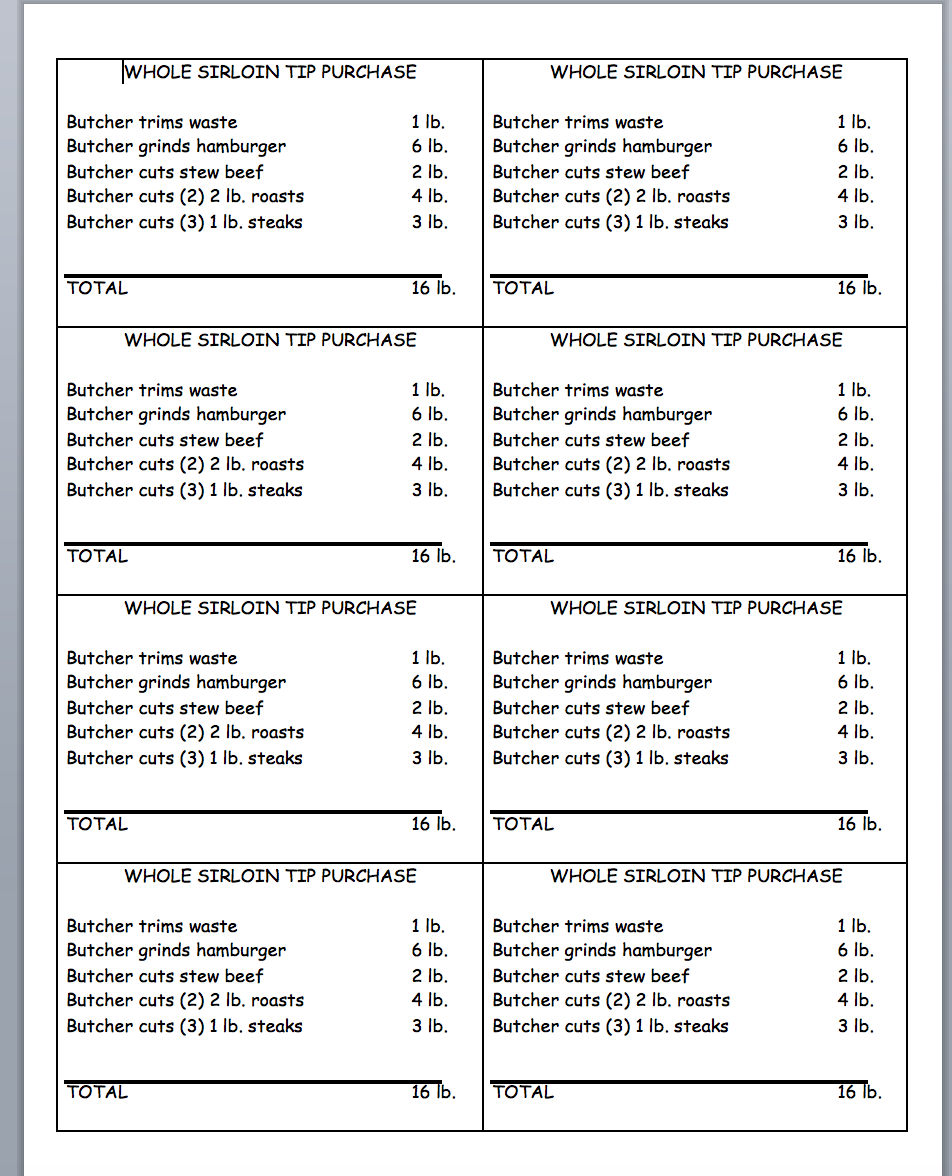
Buying the whole sirloin tip costs less per pound than buying each of these items individually. To preserve the meat for longer freezer storage, wrap each item tightly in plastic wrap to keep the air from getting to the meat. Then place the wrapped items in freezer storage bags or containers. Make sure you push as much of the excess air out of the freezer bag as you can prior to putting in the freezer. I close the bag all the way leaving a space to insert a straw. Suck all the air out of the bag and pull the straw out while closing the remaining space. This is almost as good as the expensive vacuum sealers. Mark the bags with the contents and the date you put it in the freezer.
My husband loves ribeye steaks. Recently a local store had whole rib-eyes on sale for $6.99/lb. A quick trip to the “club” grocery store down the street to which we belong showed that their whole rib-eyes were $3.00/lb. more expensive. So we bought the whole rib-eye at our local grocery store and had the butcher cut it into 1” thick steaks. At home, I cut each of these steaks into half giving us steaks that averaged about 5-6 ounces. This amount provides an adequate serving of meat for us for dinner. When I finished cutting, wrapping and storing the steaks in the freezer, I ended up with 36 steaks that cost just $3.62 per steak. When did you last pay $3.62 for a rib-eye steak? Since we don’t eat steaks often, this will last us for over a year in the freezer. Because I protected the meat from freezer burn by wrapping first in plastic wrap and then placing in freezer storage bags, my steaks will be as good as the day I put them in the freezer.
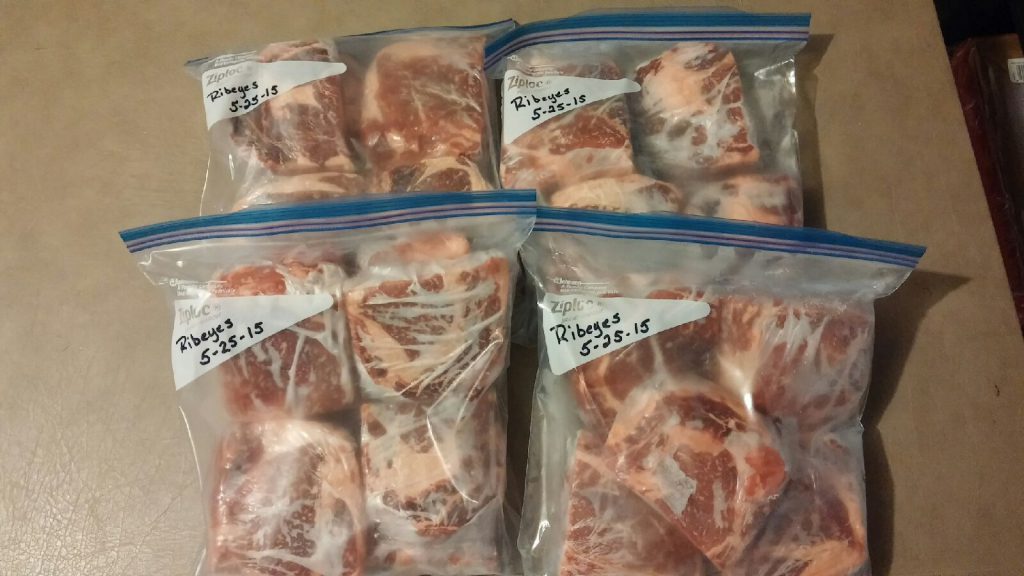
Look for ways you can purchase larger cuts of meat to save you money in the long term. It does require you to expend a larger amount of money at one time for the larger piece of meat, but if you plan and set money aside each week or month, it is well worth it when your freezer is stocked with good, quality meat at a reasonable price.
For more information about the different cuts of beef available, check this infographic: http://www.angus.org/pub/beefchart.pdf .
Happy shopping!
Suzanne
Family, Fun, and Fitness!
Looking for ways to increase your physical activity and have fun as a family?
Check the video below and share with us, what are your family’s favorite physical activities?
Save time and money with a well-stocked pantry
I love experimenting in the kitchen but quite honestly, I haven’t always checked to see what I had on hand prior to starting a recipe. This left me frustrated and running to the store to grab a couple of last minute items. In most cases, they were items that I should have already had in my pantry. After experiencing this a couple of times, I decided to make a list of basic items that I would keep in my pantry.
Keeping a well-stocked pantry not only saves money and time, but, is essential for any cook. Whether you are a beginner or an experienced cook, having some basic supplies on hand will help you be prepared to put together a family friendly meal or last minute dinner for friends. Keep your pantry stocked so when you’re short on time, what you need is always on hand.
You may ask yourself these questions, “what are basic items to keep in a well-stocked pantry?” or “what kinds of ingredients do I need to keep in the pantry to be prepared for unexpected company?”
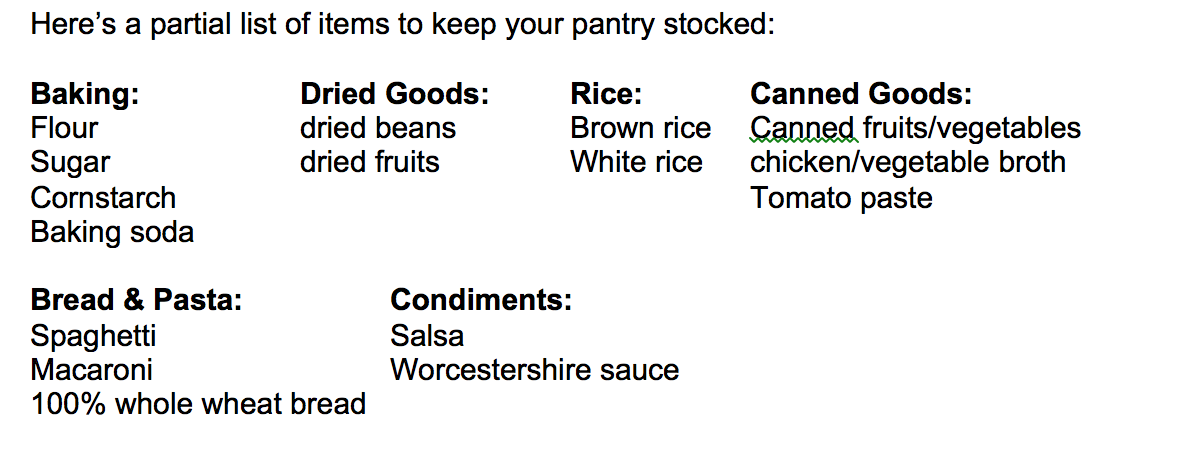
For more information visit: http://www.fruitsandveggiesmorematters.org/the-well-stocked-pantry.
Stephanie
Tips for Container Gardening
Many varieties of vegetables can be grown in container gardens. Vegetables that grow well in containers are those with a confined habit of growth, such as salad greens, spinach, eggplant, Swiss chard, beets, radish, carrots, peppers, bush beans, tomatoes, bush varieties of summer squash and cucumbers, green onions, and many herbs.
Containers: There are many possible containers that can be used to start your garden. From plastic, wood or clay, containers should be large enough to support plants when fully grown. This chart provides a sample lists vegetables, minimum container for growth and sample varieties. Space requirements for vegetables can also be found on the seed packet.
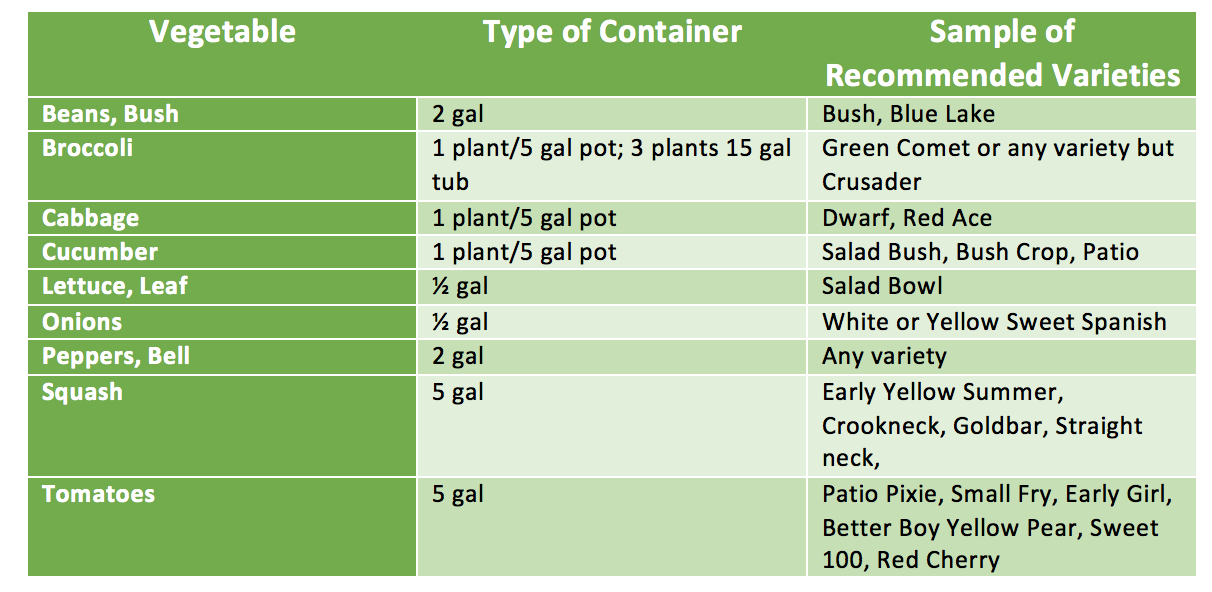
Raise Beds/Square Foot Gardening: This is a form of container gardening in which the soil is formed in three-to-four-foot-wide beds, which can be of any length or shape. It requires less work, less weeding, & less watering. The chart below provides a graphic example of plant spacing.
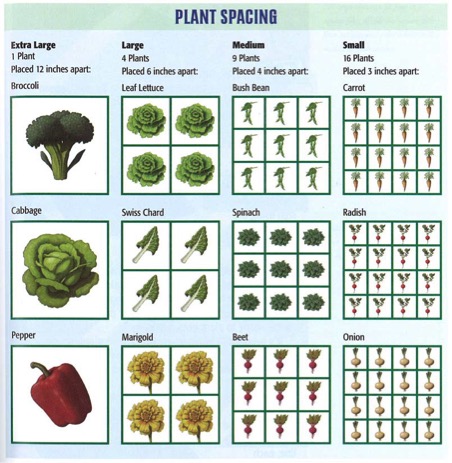
Gardening can also save you money. Here are a few examples of how much you save growing your own vegetables.
- Four tomato plants = $15. The average yield for a row of about four plants is 60 pounds. The going retail price per pound for tomatoes is $1.77, while yours only cost about 25 cents.
- You’ll save even more with bell peppers. With a $12 investment in six plants, you can reap up to 120 pounds of peppers. That lowers the price per pound from $2.37 in stores to 10 cents.
- Easy-to-grow broccoli also costs less than a third of the retail price per pound, at around 50 cents rather than $1.37.
Source: Iowa State University and Bureau of Labor Statistics
Gardening tips to get you started:
- Choose a sunlit area to place the plants & decide which plants you want to grow.
- Choose a good planter. Vegetables with shallow roots – such as lettuce, radishes and herbs – can grow in as little as 8 in. of soil depth. Larger plants, such as tomatoes, bush beans and squash, need deeper and larger pots.
- Fertilize and Water Your Vegetable Container Garden. Proper watering is essential for a successful container garden, since soil dries out faster in pots than in the ground. Be sure to check for moisture each day.
Harvesting: Harvesting container vegetables is the same as garden vegetables. You will know they are ready by visual inspection, or sampling the produce.
Travella
Travella Free serves as an Extension associate and coordinator of the Discover Agriculture Program at the North Carolina Agricultural and Technical State University Farm. In this position, she is responsible for the development and delivery of science-based programs for kindergarten-through-12th-grade students.
Make Your Own Salsa
‘Tis the season for fresh fruits and vegetables and what better way to turn the bounty of the season into a healthy snack or compliment to a meal than salsa! Salsa can be made from a variety of fruits and vegetables and is a great way to add flavor to any dish or meal. Check out these delicious salsa combinations.
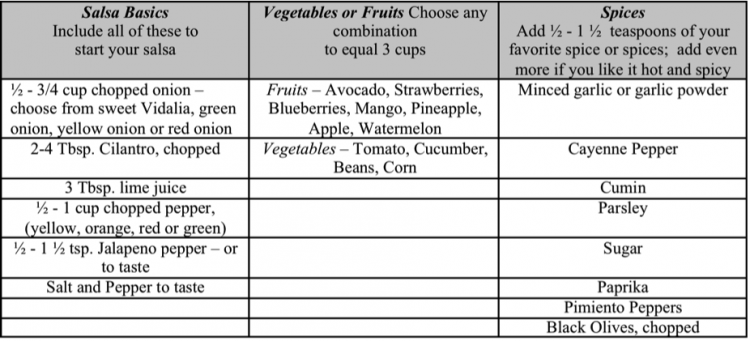
Put all ingredients in a blender or food processor if you want a sauce consistency. Chop all ingredients very small for a salsa to dip your chip into or spread over meat. Rough chop the ingredients (about 1” size) to use as a side dish for your meal.
Combination Suggestions
Blueberry, Cantaloupe and Pineapple – serve with baked tortilla chips
Mango, Kiwi, Pineapple and Avocado – serve over grilled fish or with chips
Strawberry, Kiwi and Peach – makes a delicious, healthy, light side dish
Watermelon, Mango, and Peach – serve with chips, chicken or fish
Black Bean, Corn and Tomato – serve with chips, baked potatoes, over tacos, as a topping for wraps or in recipes instead of store bought salsa
Cucumber, Apple and Pineapple – serve with chips, chicken, or as a side dish
Tomato – serve with chips, with tacos, over scrambled eggs, with baked potatoes, as a topping for fish, chicken or beef or use in recipes instead of jarred salsa
Avocado, Tomato, and Corn – serve with chips, chicken or fish
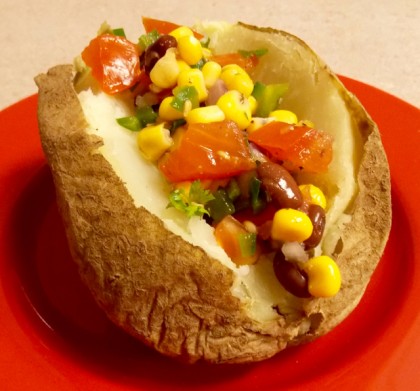
-Lorelei